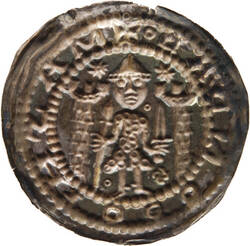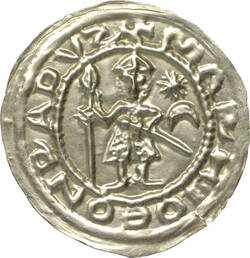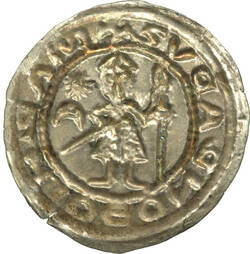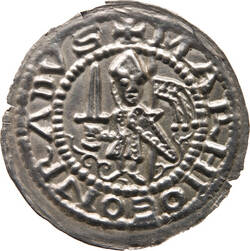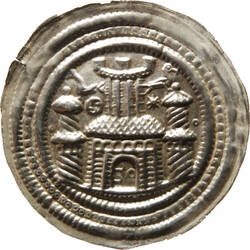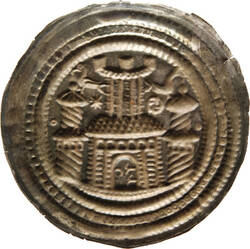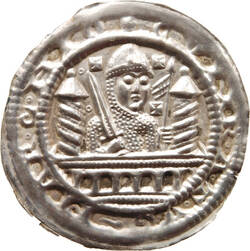This coin is called a "bracteate". It's a single-sided penny struck from thin sheet silver. The reverse shows a negative version of the image on the coin. Coins like this one were first called "bracteates" in the 17th century. It's a term derived from the Latin bractea, meaning "thin piece of metal".
Though they only came by their name in the 17th century, the first such coins were actually struck in the twelfth century – in the eastern reaches of Central Germany, probably in Thuringia or Meissen. From there, they spread as far as the rivers Main and Weser, and later on into Bohemia and Moravia. There was also a second, separate area of circulation: on the Upper Rhine, around Lake Constance, in Upper Swabia and Switzerland. Bracteates were still being minted in the 14th century.
Artistically, the most elaborate bracteates were produced in the second half of the 12th century. Today, they're regarded as Late Romanesque works of art in miniature. The coin you see here can certainly be included in that number. It was struck in around 1150. The quality of the minting deteriorated from the 13th century onwards, with the images becoming increasingly unprepossessing.
This bracteate was commissioned by Margrave Conrad of Meissen. He's represented by the figure between the two towers, equipped with a helmet, chain mail, sword and lance. The circumscription gives his name as MARCHIO CONRADUS. He's regarded as the founder of the Wettin dynasty's power base in Central Germany. The coin, which has the number nine, was probably struck at the margrave's mint in Meissen. The bracteate was discovered in the spring of 1898 in a village very close to Meissen.
Further Media
- Location & Dating
- Meissen, n.d. (1130-1156)
- Material & Technique
- silver, embossed
- Dimenions
- Diameter: 31,2 mm; weight: 0,77 g
- Museum
- Münzkabinett
- Inventory number
- AFB22
